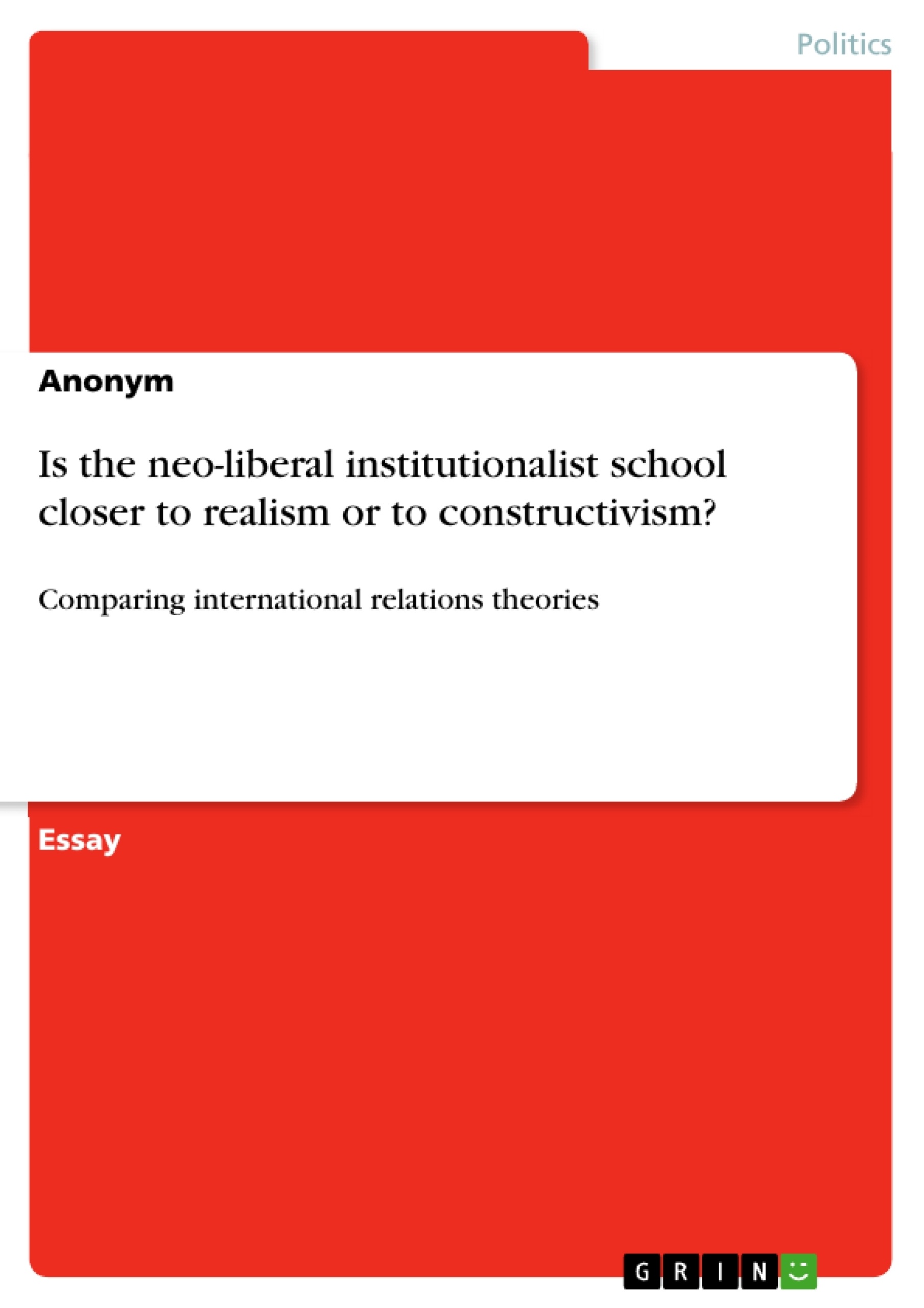The aim of this essay is to define the basic ideas of three of these main streams in the international relations, namely realism ( and in parts the subschool formed from it- neorealism), neo-liberal institutionalism and constructivism and to examine the main similarities and differences between them. The analysis will be basically formed around the neo-liberal institutionalist school, which will be used as a point of comparison.
The speed of global changes has been dynamically growing since 1989, when the Berlin Wall and the massive transformations in Central and Eastern Europe signaled the collapse of the Soviet empire and the Soviet Union. Throughout the Cold War, analysts developed different theories and engaged themselves in debates, sometimes incomprehensible for non-specialists.
Realism against idealism, liberalism and constructivism have been discussed in terms of their influence on world politics and the amount of social and political development which they could explain.
Inhaltsverzeichnis (Table of Contents)
- Introduction
- Realism
- Classical Realism
- Neo-realism
- Neo-Liberal Institutionalism
- Constructivism
- Comparison of the Theories
- Conclusion
Zielsetzung und Themenschwerpunkte (Objectives and Key Themes)
This essay examines the basic ideas of realism, neo-liberal institutionalism, and constructivism in international relations. It aims to determine whether neo-liberal institutionalism aligns more closely with realism or constructivism by exploring their shared assumptions and differences.
- The role of the state in international relations
- The nature of international anarchy
- The importance of power and interests
- The influence of institutions on state behavior
- The construction of identity and interests
Zusammenfassung der Kapitel (Chapter Summaries)
- Introduction: This section introduces the essay's focus on comparing neo-liberal institutionalism with realism and constructivism, emphasizing the importance of understanding their core assumptions and differences.
- Realism: This chapter outlines the key tenets of realism, including its view of the state as the primary actor in international relations, the inherent conflict and struggle for power in an anarchic system, and the concept of self-help. It also delves into the distinctions between classical realism and neo-realism, highlighting the latter's focus on security and its differing assumptions on human nature and stability.
- Neo-Liberal Institutionalism: This chapter discusses the core principles of neo-liberal institutionalism, emphasizing the importance of institutions in shaping international relations and promoting cooperation. It explains how neo-liberal institutionalists believe that institutions can mitigate anarchy, leading to absolute gains for all participating states. The chapter also details the different types of institutions identified by Robert O. Keohane.
- Constructivism: This chapter explores the constructivist perspective on international relations, which emphasizes the role of ideas, culture, and language in shaping state identities and interests. It highlights how interactions between states construct their identities and interests and examines how these interactions can lead to conflict or cooperation.
- Comparison of the Theories: This chapter analyzes the similarities and differences between realism, neo-liberal institutionalism, and constructivism. It focuses on their respective views on the state, anarchy, power, and interests, and how these perspectives influence their understanding of international relations.
Schlüsselwörter (Keywords)
The main keywords and focus topics of this essay include realism, neo-realism, neo-liberal institutionalism, constructivism, international relations, state, anarchy, power, interests, institutions, identity, security, cooperation, and self-help.
- Quote paper
- Anonym (Author), 2012, Is the neo-liberal institutionalist school closer to realism or to constructivism?, Munich, GRIN Verlag, https://www.grin.com/document/455582




